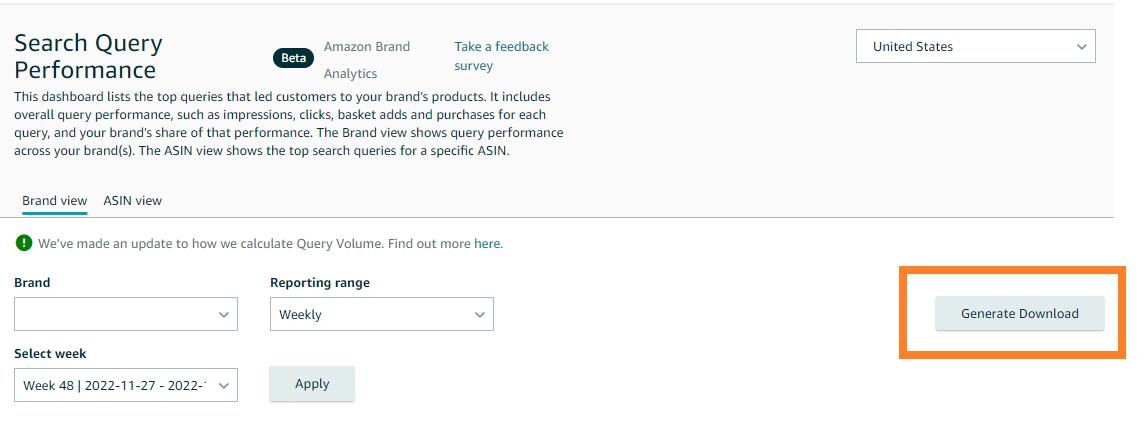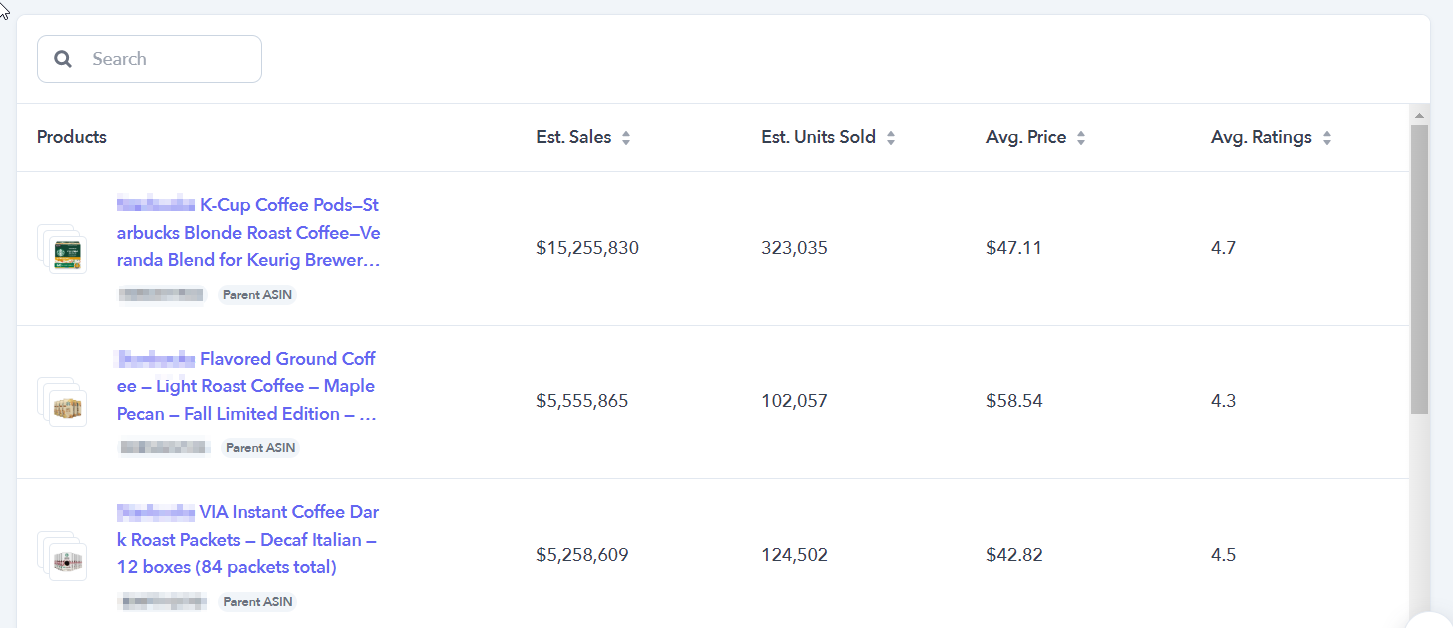Amazon’s Brand Analytics offers a powerful suite of tools to empower brand owners and sellers with crucial insights. Among these, the Search Query Performance Report stands out as a cornerstone for understanding how customers interact with products on the platform. This report provides in-depth data on the search terms that lead to clicks and conversions, offering actionable insights for optimizing product visibility and driving sales. Here’s a detailed exploration of the key features and benefits of the Search Query Performance Report:
Granular Search Term Insights:
The Search Query Performance Report provides a granular view of the search terms that customers use to discover and engage with your products. This insight goes beyond broad keywords, offering a detailed breakdown of the specific terms customers enter into the search bar.
Clicks and Conversion Metrics:
Understanding how different search terms impact clicks and conversions is vital for optimizing product listings. The report provides data on the number of clicks each search term generates, as well as the resulting conversion rates. This allows businesses to identify high-performing search terms and adjust strategies accordingly.
Discover High-Opportunity Keywords:
Identifying high-opportunity keywords is a key benefit of the Search Query Performance Report. By analyzing which search terms drive the most clicks and conversions, businesses can uncover valuable insights into customer intent and preferences. This information guides the optimization of product listings and advertising campaigns for increased effectiveness.
How to download data from the Amazon Search Query Performance dashboard

You may examine the top 1,000 searches in the brand view and select the time period (weekly, monthly, or quarterly). The top 100 searches for each ASIN are shown in the ASIN view, which offers the same options for time periods. As of September 2022, extracting your SQP data only requires clicking the “Generate Download” button.
Competitive and market intelligence solutions Amazon’s Search Query Performance report

Although Amazon advertising can benefit greatly from the Search Query Performance dashboard, one of its main drawbacks is that it does not allow you to identify and analyse specific competitors in your market sector.
With Perpetua’s fully-integrated market and competitive intelligence tool, Prism, you can instantly get product specifications, ranking data, ASIN assortments, keywords, and pricing information of your rivals on a single platform. Prism allows you to:
swiftly locate and use Amazon advertisements to target leading competitor ASINs;
Compare your organic ranks to those of your rivals, then target the keywords for which they are outperforming you;
To outmanoeuvre other sellers in your subcategory, find holes or modifications in the offerings of competitors.
Assess Keyword Relevance:
The report allows businesses to assess the relevance of specific keywords to their products. By understanding which search terms are most relevant to their offerings, brands can refine their keyword strategies, ensuring that product listings align closely with customer search behavior and expectations.
Optimize Advertising Campaigns:
For brands engaged in advertising on Amazon, the Search Query Performance Report is an indispensable tool. It provides insights into how advertising campaigns perform for specific search terms. Businesses can adjust bids, refine targeting, and optimize ad content based on the performance data, ultimately maximizing the impact of their advertising efforts.
Evaluate Negative Keywords:
In addition to identifying high-performing keywords, the report allows businesses to evaluate the performance of negative keywords. Negative keywords are terms for which you don’t want your ads to appear. Analyzing the impact of these exclusions helps refine targeting strategies and ensures that advertising budgets are allocated efficiently.
Tailor Content for Search Relevance:
Armed with insights from the Search Query Performance Report, businesses can tailor product content to align with customer search queries. This includes optimizing product titles, descriptions, and bullet points to ensure that products are surfaced prominently for relevant search terms, driving increased visibility and customer engagement.
Strategic Product Positioning:
Understanding the performance of specific search queries enables brands to strategically position their products. By aligning products with popular and relevant search terms, businesses can capture the attention of their target audience, improve click-through rates, and increase the likelihood of conversions.
Continuous Improvement Through Iteration:
The iterative nature of e-commerce success is highlighted by the Search Query Performance Report. Brands can continuously refine their strategies by iterating based on the performance of different search terms. Regularly reviewing and adapting to changing customer behaviors ensures ongoing relevance and effectiveness.
Data-Driven Decision-Making:
The report empowers brand owners and sellers to make data-driven decisions. Whether adjusting product listings, fine-tuning advertising campaigns, or updating keyword strategies, businesses can confidently navigate the competitive Amazon landscape armed with actionable insights from the Search Query Performance Report.
In conclusion, the Search Query Performance Report within Amazon Brand Analytics is a game-changer for brands aiming to maximize their impact on the platform. By unraveling the intricacies of customer search behavior, businesses can tailor their strategies for optimal performance, drive product visibility, and ultimately enhance their position in the competitive e-commerce landscape.
Author: retailtantra
https://retailtantra.comRelated posts
Quick Links
Our Services
Support
+91 9777917234
contact@retailtantra.com
Social Chat is free, download and try it now here!








